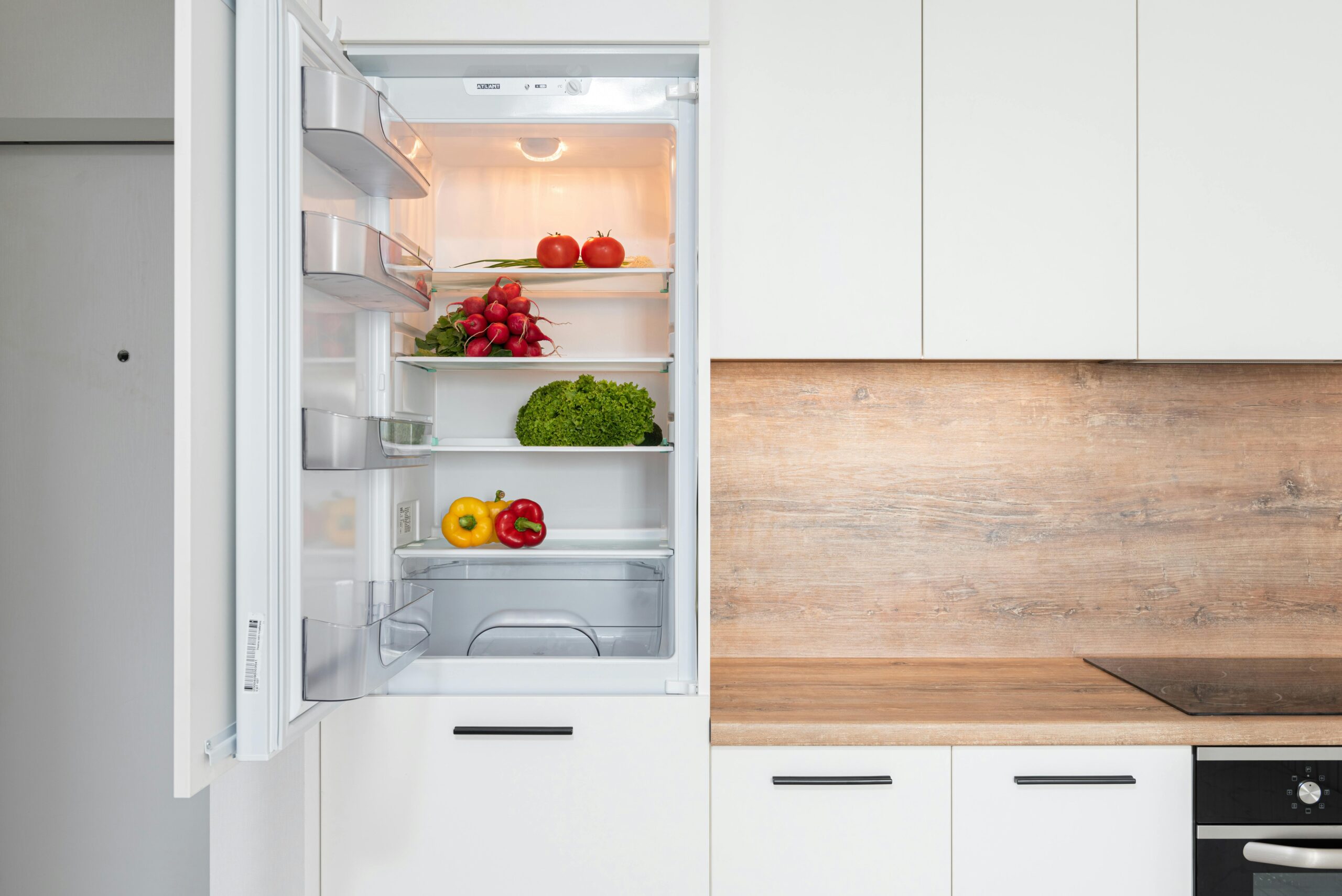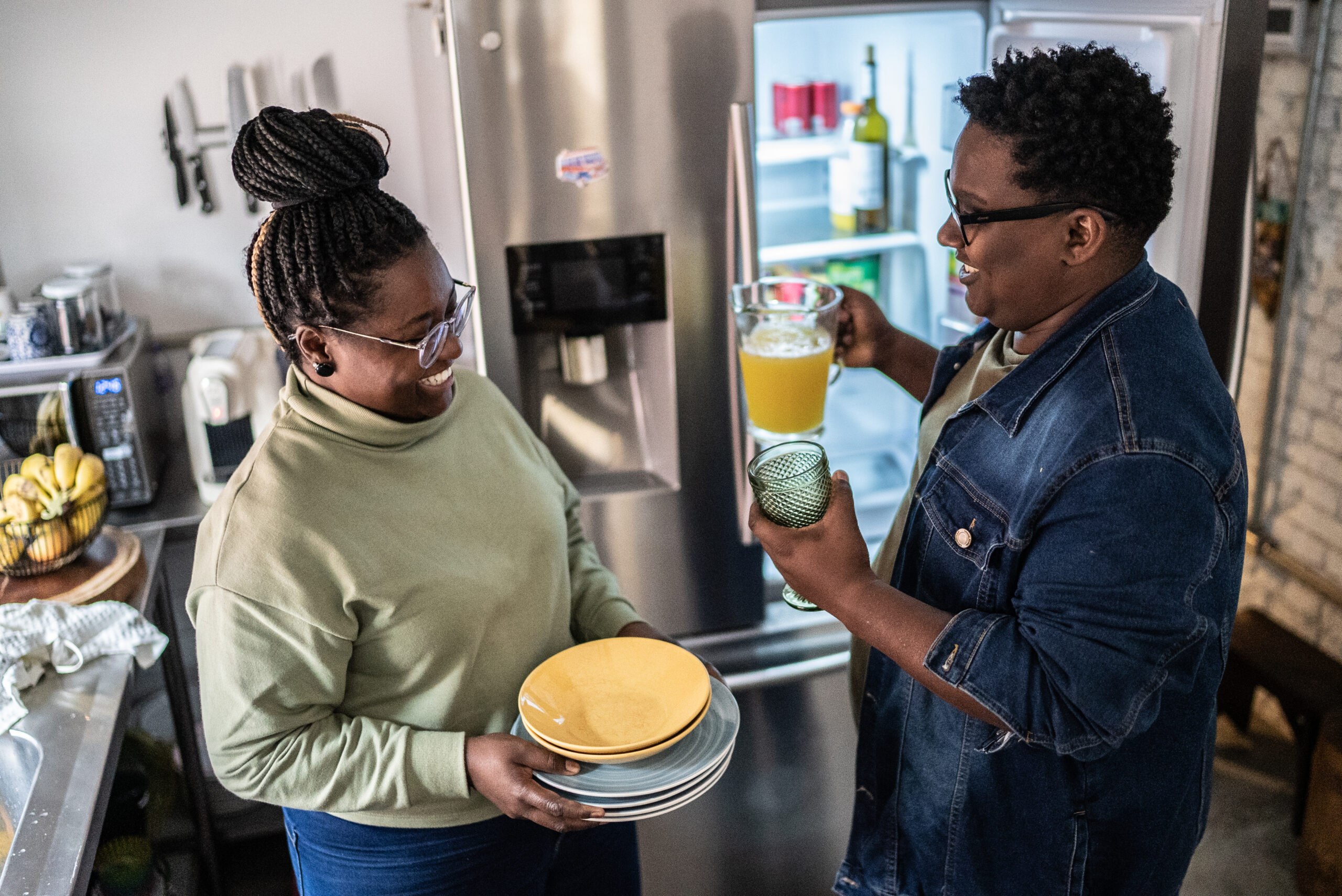Organizing your fridge might seem like an unnecessary task, but there’s some method to the madness: a well-organized fridge can actually make your life easier, save you money, and even help you eat healthier. Plus, who doesn’t love opening the fridge door to a neat, tidy, and welcoming display of food?
Here are some of the best ways to transform your fridge from chaos to order and the benefits of doing so.


First Things First: Clean It Out
Before getting into the nitty-gritty of organization, start with a clean slate. Take everything out of your fridge. Yes, everything. This step is important for a couple of reasons: you can toss out expired items, and it gives you the perfect opportunity to wipe down all the surfaces. While you’re at it, maybe ponder how that mystery jar of something managed to sneak into the back and remain unnoticed for months.
Sort and Categorize Your Items
With your fridge emptied and sparkling clean, it’s time to sort through your items. Group similar items together: dairy, meats, fruits, vegetables, condiments, leftovers, and beverages. This step will help you see exactly what you have and make it easier to find a home for each category in the fridge.


Use the Right Zones for the Right Foods
Did you know your fridge has different temperature zones? Using these correctly can extend the shelf life of your groceries. Here’s a quick guide:
The Top Shelf
The top shelf is the warmest part of your fridge, making it perfect for foods that don’t need super cold temperatures. Store leftovers, drinks, and ready-to-eat foods here. Think of it as the “easy access” zone for your late-night snack raids.
The Middle Shelf
The middle shelf maintains a consistent, moderate temperature, which is ideal for dairy products like milk, cheese, and yogurt. Despite the built-in egg holders on the door, it’s also a good spot for eggs—more on that later.
The Bottom Shelf
The bottom shelf is the coldest, so you should store raw meat, poultry, and fish there. Keeping these items at the bottom also helps prevent potential drips or spills from contaminating other foods.
The Crisper Drawers
Most fridges have two crisper drawers, sometimes with adjustable humidity settings. Use one drawer for fruits and set it to low humidity. Use the other for vegetables and set it to high humidity. This separation keeps fruits and veggies fresher for longer and prevents ethylene gas from fruits (which speeds up ripening) from spoiling your veggies prematurely.


Door Storage: Handle with Care
The fridge door is the warmest part, thanks to the constant opening and closing. It’s best to avoid storing perishable items like milk or eggs here. Instead, use the door shelves for condiments, sauces, and beverages. Your salad dressings and ketchup bottles will thank you for the extra legroom.
Use Clear Containers and Labels
Transparent containers are your besties when it comes to fridge organization. They make it easy to see what’s inside, helping you keep track of leftovers and reducing food waste. Label each container with the contents and the date you stored it. This small step can save you from those “Is this still good?” moments and prevent the science experiment from lurking in the back of the fridge.
Get Fridge Organizers
Fridge organizers, such as bins, lazy Susans, and shelf dividers, can make a huge difference in maintaining order. Bins can group similar items together and make them easy to pull out and access. A lazy Susan is perfect for condiments, allowing you to spin and find exactly what you need without knocking over everything else. Shelf dividers can help create zones within your fridge, keeping everything neat and tidy.


Keep It Up: Maintenance
The key to maintaining your fridge is regular upkeep. Make it a habit to do a quick check every week before grocery shopping. Toss out expired items, wipe down any spills, and rearrange as needed. This routine will keep your fridge in top shape and make restocking a breeze.
Organizing Your Fridge Can Save You Money
An organized fridge isn’t just pleasing to the eye; it can also save you money. When you can easily see what you have, you’re less likely to buy duplicates or let food go to waste. Plus, properly storing items can extend their shelf life, meaning fewer trips to the grocery store and more money in your pocket.
It’s Healthier, Too
A well-organized fridge can also promote healthier eating habits. When healthy foods like fruits, vegetables, and yogurt are front and center, you’re likelier to reach for them instead of that hidden stash of leftover pizza. Out of sight, out of mind works both ways!
